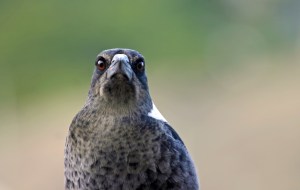Discover stories in Biodiversity
No Caribou for Christmas: A Disappearing Herd Now Down To One
The last herd of caribou that crosses into the “lower 48” now has one animal. What happened?
The Bizarre and Disturbing Life of Sea Cucumbers
Sea cucumbers are absolutely fascinating, despite an utter lack of charisma.
Your Guide to Enjoying Winter Birds
Understand your backyard birds, find new species, enjoy new avian-related adventures with our complete guide to winter birding.
Winter Warmer: Make Tea from Local, Wild Plants
You can find the ingredients for a tasty wild tea on your next hike or ski trip.
Can Tourism Save the Ocellated Turkey?
The ocellated turkey is on the brink throughout its range. Can its recovery follow the path of the American wild turkey?
Australian Magpies Are The Real Angry Birds
Spring often brings stories of watchful bird parents defending their nests. But nowhere is this swooping season as terrifying as Australia
A Presidential Pardon for A Thanksgiving Raccoon
The true story of a U.S. president, Thanksgiving dinner and a raccoon.
11 Wildly Colored Moths to Brighten Your Day
A celebration of the beauty of moths.
Three Lizards in a Beer Can
A video shows how a routine trash pick-up revealed a reptilian surprise.
Electrofishing Threatens A Rare Dolphin-Human Partnership
Myanmar’s river dolphins have learned to fish cooperatively with humans. But illegal electrofishing threatens this rare partnership.
Tracking Gray Bats by Plane, Transmitter and Automobile
Where does a bat go once it leaves its cave?
Possum Terrors and Rediscovering Urban Wildlife
How a move across the world - and a terrifying possum - helped me rediscover urban wildlife.











